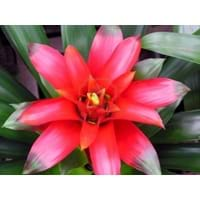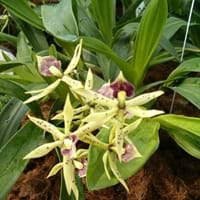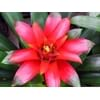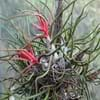Life Span
Annual or Biennial
Perennial
Origin
Hybrid origin, South America
Southeastern United States, Latin America and the Caribbean, Caribbean, Central America, South America
Types
not available
Not Available
Habitat
Homesteads, Screen Cottage and Informal Garden, Woodlands
Swamps
USDA Hardiness Zone
9-11
10-13
Sunset Zone
H1, H2, 22, 23, 24
H1, H2, 23, 24
Habit
Rosette/Stemless
Clump-Forming
Flower Color
White, Red
White, Burgundy, Dark Red, Light Green, Violet, Dark Salmon
Flower Color Modifier
Bicolor
Multi-Color
Fruit Color
Non Fruiting Plant
Not Available
Leaf Color in Spring
Light Green, Burgundy
Green
Leaf Color in Summer
Light Green, Burgundy
Green
Leaf Color in Fall
Light Green, Burgundy
Green
Leaf Color in Winter
Light Green, Burgundy
Green
Leaf Shape
Long and slender with very sharp edges
Long Linear
Plant Season
Spring, Summer, Fall, Winter
Spring, Summer, Fall
Sunlight
Partial Sun, Partial shade
Partial Sun, Partial shade
Type of Soil
Sand
Not Available
The pH of Soil
Acidic, Neutral, Alkaline
Neutral, Slightly Acidic
Soil Drainage
Well drained
Well drained
Bloom Time
Early Summer, Summer, Late Summer
Late Spring, Early Summer, Summer, Late Summer, Early Fall, Fall, Late Fall
Tolerances
Drought
Not Available
Where to Plant?
Pot
Container, Ground, Pot
How to Plant?
Corms or bulbs, From Rhizomes, Rhizome division
Bulbs, By dividing rhizomes, tubers, Divison
Plant Maintenance
Medium
Medium
Watering Requirements
Average Water Needs, Never Over-water
Average Water Needs, Do Not over Water, Requires regular watering
In Summer
Lots of watering
Lots of watering
In Spring
Moderate
Moderate
In Winter
Average Water
Average Water
Soil pH
Neutral, Slightly Acidic
Neutral, Slightly Acidic
Soil Type
Moist but well drained, Sandy
Not Available
Soil Drainage Capacity
Poorly Drained
Well drained
Sun Exposure
Indirect sunlight, Partial shade
Partial Sun, Partial shade
Pruning
Remove damaged leaves, Remove dead branches, Remove dead leaves
Remove damaged leaves, Remove dead branches, Remove dead leaves
Fertilizers
All-Purpose Liquid Fertilizer
All-Purpose Liquid Fertilizer
Pests and Diseases
Pests and diseases free
Red blotch
Plant Tolerance
Drought
Drought
Flower Petal Number
Single
Single
Foliage Texture
Medium
Coarse
Foliage Sheen
Glossy
Glossy
Attracts
Hummingbirds
Bees, pollinators
Allergy
Unknown
no allergic reactions
Aesthetic Uses
Showy Purposes
Bouquets, Showy Purposes
Beauty Benefits
Not Available
Not Available
Environmental Uses
Air purification
Air purification
Medicinal Uses
Not Available
Cancer, Eye Problems
Part of Plant Used
Not Available
Bulbs, Flowers, Leaves
Other Uses
Not Available
Used as Ornamental plant
Used As Indoor Plant
Yes
Yes
Used As Outdoor Plant
Yes
Yes
Garden Design
Houseplant, Informal Garden
Container, Feature Plant, Houseplant, Mixed Border
Botanical Name
Bromeliad
PROSTHECHEA cochleata
Common Name
Bromeliad
Clamshell Orchid, Cockleshell Orchid, Black Orchid
In Hindi
Bromeliad
Clamshell Orchid
In German
Bromeliad
Clamshell Orchid
In French
Bromeliad
Clamshell Orchid
In Spanish
Bromeliad
Clamshell Orchid
In Greek
Bromeliad
Encyclia Cochleata
In Portuguese
Bromeliad
Clamshell Orchid
In Polish
Bromeliad
Clamshell Orchid
In Latin
Bromeliad
Clamshell Orchid
Phylum
Spermatophyta
Magnoliophyta
Class
Liliopsida
Liliopsida
Order
Bromeliales
Orchidales
Family
Bromeliaceae
Orchidaceae
Genus
Aechmea
Prosthechea
Clade
Not Available
Angiosperms, Monocots
Tribe
Not Available
Epidendreae
Subfamily
Not Available
Epidendroideae
Number of Species
Not Available
Not Available
Difference Between Bromeliad and Clamshell Orchid
If you are confused whether Bromeliad or Clamshell Orchid are same, here are some features about those plants to help you choose better. Many people think that these two plants have the same characteristics, but one can see Bromeliad and Clamshell Orchid Information and learn more about it. Fertilizers required for proper growth of Bromeliad are All-Purpose Liquid Fertilizer, whereas for Clamshell Orchid fertilizers required are All-Purpose Liquid Fertilizer. Hence, one should know the basic difference between Bromeliad and Clamshell Orchid if you are planning to have them in your garden to enhance its beauty.
<
Flowering PlantsImportance of Bromeliad and Clamshell Orchid
Want to have the most appropriate plant for your garden? You might want to know the importance of Bromeliad and Clamshell Orchid. Basically, these two plants vary in many aspects. Compare Bromeliad and Clamshell Orchid as they differ in many characteristics such as their life, care, benefits, facts, etc. Every gardener must at least have the slightest clue about the plants he wants to plant in his garden. Compare their benefits, which differ in many ways like facts and uses. The medicinal use of Bromeliad is Not Available whereas of Clamshell Orchid is Cancer and Eye Problems. Bromeliad has beauty benefits as follows: Not Available while Clamshell Orchid has beauty benefits as follows: Not Available.
Compare Facts of Bromeliad vs Clamshell Orchid
How to choose the best garden plant for your garden depending upon its facts? Here garden plant comparison will help you to solve this query. Compare the facts of Bromeliad vs Clamshell Orchid and know which one to choose. As garden plants have benefits and other uses, allergy is also a major drawback of plants for some people. Allergic reactions of Bromeliad are Unknown whereas of Clamshell Orchid have no allergic reactions respectively. Having a fruit bearing plant in your garden can be a plus point of your garden. Bromeliad has no showy fruits and Clamshell Orchid has no showy fruits. Also Bromeliad is not flowering and Clamshell Orchid is not flowering . You can compare Bromeliad and Clamshell Orchid facts and facts of other plants too.




